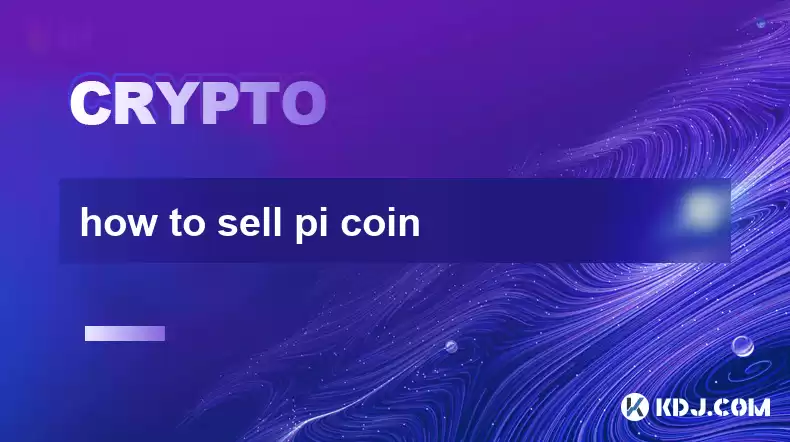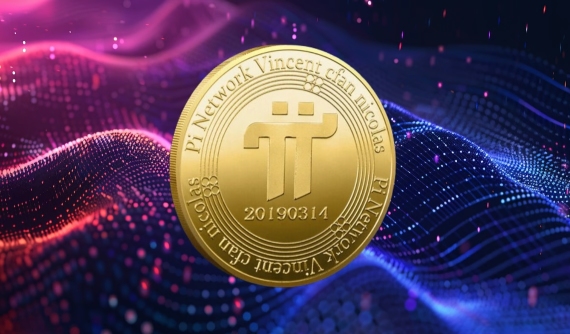-
 Bitcoin
Bitcoin $116900
0.00% -
 Ethereum
Ethereum $4280
5.48% -
 XRP
XRP $3.265
-1.45% -
 Tether USDt
Tether USDt $1.000
-0.01% -
 BNB
BNB $807.0
1.41% -
 Solana
Solana $183.1
2.93% -
 USDC
USDC $0.9999
0.00% -
 Dogecoin
Dogecoin $0.2440
6.50% -
 TRON
TRON $0.3357
-0.88% -
 Cardano
Cardano $0.8178
2.63% -
 Hyperliquid
Hyperliquid $44.13
7.45% -
 Chainlink
Chainlink $21.39
9.09% -
 Stellar
Stellar $0.4524
-0.84% -
 Sui
Sui $3.957
2.13% -
 Bitcoin Cash
Bitcoin Cash $572.7
-2.54% -
 Hedera
Hedera $0.2671
1.54% -
 Avalanche
Avalanche $24.77
4.17% -
 Ethena USDe
Ethena USDe $1.001
0.02% -
 Litecoin
Litecoin $122.3
-1.94% -
 Toncoin
Toncoin $3.432
2.26% -
 UNUS SED LEO
UNUS SED LEO $9.007
0.49% -
 Shiba Inu
Shiba Inu $0.00001396
5.26% -
 Uniswap
Uniswap $11.09
1.64% -
 Polkadot
Polkadot $4.155
4.57% -
 Dai
Dai $1.000
0.00% -
 Pepe
Pepe $0.00001253
5.11% -
 Cronos
Cronos $0.1588
2.67% -
 Bitget Token
Bitget Token $4.512
0.05% -
 Monero
Monero $275.0
0.64% -
 Ethena
Ethena $0.7527
15.10%
how to sell pi coin
To sell Pi, first ensure it's migrated to the mainnet. Then, enable withdrawals on the Pi Network app, choose a supported exchange, complete KYC verification on both platforms, and transfer your Pi. Finally, create a sell order, considering market conditions and associated risks.
Mar 21, 2025 at 03:26 pm

Confirm the status of Pi coins
Turn on the withdrawal function
Log in and verify your identity : Open the Pi Network application and log in with your registered account. To ensure transaction security, the platform usually requires users to complete the KYC (Know Your Customer) identity verification process. This process requires users to provide real and valid personal identity information, such as ID card photos, facial recognition, etc., to confirm the authenticity and uniqueness of the user's identity and avoid false accounts and fraud.
Enter the wallet operation : After completing the authentication, find the "Wallet" option in the main interface of the application and click Enter. The wallet page is the core area for managing Pi coins, where you can view important information such as Pi coins’ balance, transaction records, etc. On the wallet page, there will be a special "withdrawal" button. Click this button to start the withdrawal process. Enter the number of Pi coins you plan to withdraw, carefully check the information, and submit the application for withdrawal after confirming that it is correct.

Choose a trading platform
Filtering platforms that support Pi coins : Not all digital currency exchanges support Pi coins trading, so trading platforms that clearly express their support for Pi coins need to be filtered out. You can obtain platform information that supports Pi coin transactions through cryptocurrency information websites, forums, and Pi coin official community. Some well-known platforms that support Pi coin trading usually have high user activity and liquidity, which can provide better guarantees for transactions.
Registration and Identity Authentication : After selecting a trading platform, complete the registration process on the platform and fill in the necessary personal information, such as username, password, email, etc. Similar to Pi Network's KYC verification, the trading platform also requires users to authenticate to meet regulatory requirements and ensure transactions are secure. The verification content may include uploading ID card photos, bank card information verification, etc. The specific verification methods and requirements of different platforms will vary.
Recharge Pi coins : After completing registration and identity verification, find the recharge portal of Pi coins in the trading platform. The platform will provide users with an exclusive recharge address, and transfer the Pi coins previously extracted from the Pi Network wallet to the recharge address as indicated by the platform. Be sure to check the recharge address carefully to avoid loss of Pi coins due to address errors.
Pi coins for sale
Pay attention to market trends : On the trading platform, pay close attention to the real-time market trends of Pi coins, including current price, price trend, trading volume and other information. Understanding market dynamics helps you seize the best time to sell to maximize your returns.
Create a sale order : In the trading interface of the trading platform, select a trading pair for selling Pi coins (such as Pi/USDT, etc.), enter the number of Pi coins you want to sell, and set a reasonable sale price according to the market situation. Trading platforms generally provide two ordering methods: market order and limit order. The market order will be sold immediately at the best price in the current market; the limit order allows you to set an expected sale price, which will be sold only when the market price reaches the set price.
Confirm and complete the transaction : Carefully check the order information, including details such as the sale quantity, price, transaction pairs and handling fees, and submit the order after confirming that it is correct. If a market price order is selected, the transaction will be completed quickly in a short period of time; if it is a limit order, the transaction needs to be completed after the market price meets the set conditions. After the transaction is successful, you will receive the corresponding exchange income (such as USDT and other digital currencies) in your trading platform account.
Withdraw funds : If you want to convert the exchange income into fiat currency (such as RMB, US dollars, etc.), you can find the withdrawal option in the trading platform, convert the digital currency into fiat currency and withdraw it to the bound bank account or other payment platform. The withdrawal process may involve certain handling fees, and the withdrawal rules and arrival time of different platforms vary.
Risk warning
Disclaimer:info@kdj.com
The information provided is not trading advice. kdj.com does not assume any responsibility for any investments made based on the information provided in this article. Cryptocurrencies are highly volatile and it is highly recommended that you invest with caution after thorough research!
If you believe that the content used on this website infringes your copyright, please contact us immediately (info@kdj.com) and we will delete it promptly.
- Shiba Inu, Pepe, and Remittix: A Tale of Memes, Hype, and Real-World Utility
- 2025-08-10 08:30:12
- Ethereum Price, ETH Tokens, Rally Prediction: Is a New All-Time High In Sight?
- 2025-08-10 08:30:12
- XRP, Elon Musk, and Wealth: A Crypto Conundrum
- 2025-08-10 08:50:12
- Retire Early with Crypto: High-Conviction Plays Beyond Bitcoin
- 2025-08-10 08:50:12
- BlockDAG, Render, and Polkadot: Charting the Course for Long-Term Crypto Dominance
- 2025-08-10 08:55:21
- Toncoin's Ascent: Price Predictions and the VERB Strategy Impact
- 2025-08-10 08:55:21
Related knowledge

How to purchase Aragon (ANT)?
Aug 09,2025 at 11:56pm
Understanding Aragon (ANT) and Its PurposeAragon (ANT) is a decentralized governance token that powers the Aragon Network, a platform built on the Eth...

Where can I buy UMA (UMA)?
Aug 07,2025 at 06:42pm
Understanding UMA and Its Role in Decentralized FinanceUMA (Universal Market Access) is an Ethereum-based decentralized finance (DeFi) protocol design...

How to buy Storj (STORJ) tokens?
Aug 09,2025 at 07:28am
Understanding Storj (STORJ) and Its Role in Decentralized StorageStorj is a decentralized cloud storage platform that leverages blockchain technology ...

What is the best app to buy Nano (NANO)?
Aug 09,2025 at 03:35am
Understanding Nano (NANO) and Its Unique FeaturesNano is a feeless, instant cryptocurrency designed for fast peer-to-peer transactions. Unlike many ot...

Where can I purchase Siacoin (SC)?
Aug 08,2025 at 11:14am
Understanding Siacoin (SC) and Its Role in the Sia NetworkSiacoin (SC) is the native cryptocurrency of the Sia decentralized cloud storage platform, a...

How to sell my Ontology (ONT) tokens?
Aug 09,2025 at 06:08pm
Understanding Ontology (ONT) and Its Trading EcosystemBefore selling your Ontology (ONT) tokens, it's essential to understand the nature of the crypto...

How to purchase Aragon (ANT)?
Aug 09,2025 at 11:56pm
Understanding Aragon (ANT) and Its PurposeAragon (ANT) is a decentralized governance token that powers the Aragon Network, a platform built on the Eth...

Where can I buy UMA (UMA)?
Aug 07,2025 at 06:42pm
Understanding UMA and Its Role in Decentralized FinanceUMA (Universal Market Access) is an Ethereum-based decentralized finance (DeFi) protocol design...

How to buy Storj (STORJ) tokens?
Aug 09,2025 at 07:28am
Understanding Storj (STORJ) and Its Role in Decentralized StorageStorj is a decentralized cloud storage platform that leverages blockchain technology ...

What is the best app to buy Nano (NANO)?
Aug 09,2025 at 03:35am
Understanding Nano (NANO) and Its Unique FeaturesNano is a feeless, instant cryptocurrency designed for fast peer-to-peer transactions. Unlike many ot...

Where can I purchase Siacoin (SC)?
Aug 08,2025 at 11:14am
Understanding Siacoin (SC) and Its Role in the Sia NetworkSiacoin (SC) is the native cryptocurrency of the Sia decentralized cloud storage platform, a...

How to sell my Ontology (ONT) tokens?
Aug 09,2025 at 06:08pm
Understanding Ontology (ONT) and Its Trading EcosystemBefore selling your Ontology (ONT) tokens, it's essential to understand the nature of the crypto...
See all articles

























































































